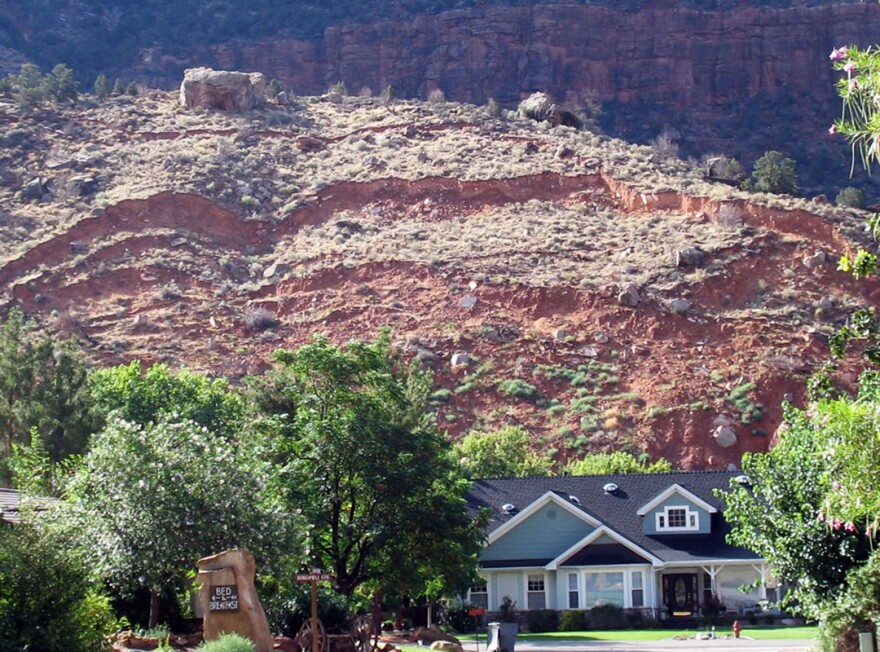



The rock and soil that makes the redrock country around Zion Canyon so picturesque, also makes it dangerous sometimes. A new geology report details the hazards.
Soil and rock crashed into a Rockville home last winter and killed the two people who lived there. This is the sort of tragedy the Utah Geological Survey hopes to avert in its new report on significant hazards on State Route 9 near Zion National Park. Bill Lund is one of the study’s authors.
“These maps,” says Lund, “provide planners and public officials, land developers and consultants, with a resource to show them where these hazards are and allows them then to take those hazards into account as they plan their projects and mitigate the risks beforehand instead of after the fact.”
The report zeroes in on nine types of hazards. Some maps spotlight flood and debris flow areas. Other maps cover rock fall, landslides, surface faulting, liquefaction and what geologists call problem soils. The study covers 97 square miles along State Route 9, which carries more than 2.5 million visitors into and out of the national park each year. Lund says the report helps people look beyond the scenery.
“It’s a beautiful place,” says Lund. “Who wouldn’t want to live in Rockville? Zion Canyon? It’s just gorgeous. The Virgin River runs through town. But there are real issues. People ignore hazards, geologic hazards, at their own risk. And we have lots of documentation where that has not worked out well.”
Lund and co-author Tyler Knudsen found that geologic hazards struck the Route 9 corridor roughly once a year. They also conclude that it’s increasingly likely for people to encounter one of these rock or soil events as because the population is growing so much.
The report can be found online at: http://geology.utah.gov/online/ss/ss-148/ss-148txt.pdf


